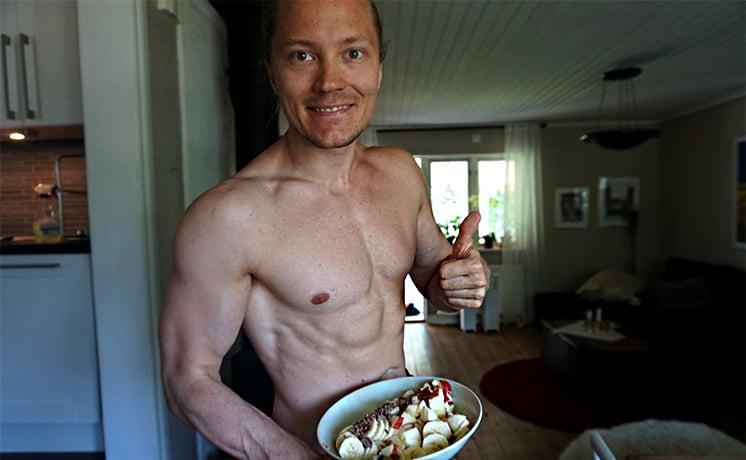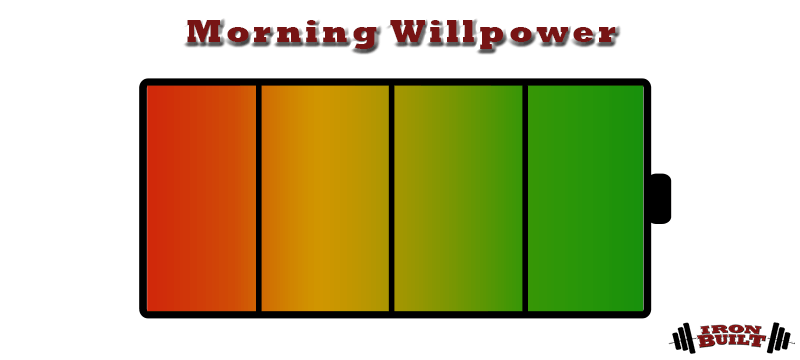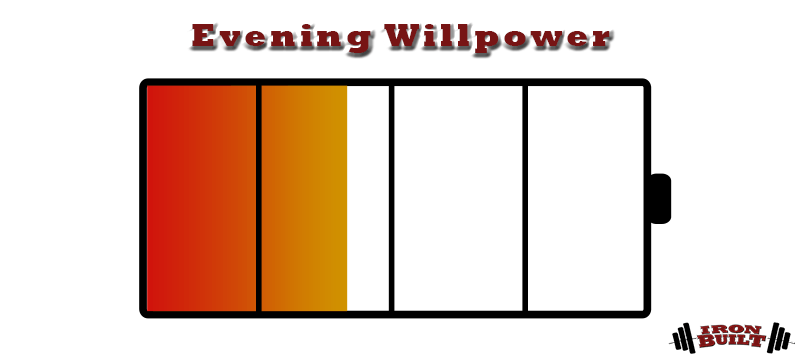
Have you ever wondered what the best intermittent fasting schedule for getting lean and ripped are?
Well, here’s the thing:
Just by budgeting calories, especially for the evening, you already get most of the benefits out of using intermittent fasting.
But, there’s one intermittent fasting schedule in particular, that definitely puts the “icing on the cake” when it comes to make being in a calorie deficit (required for for fat loss) feel extremely easy.
So, which one is it? Is it 16:8, 18:6 or 20:4?
Actually, it’s none of those.
Buckle up, you’re about to learn what I believe to be the best intermittent fasting schedule out there. A schedule that’ll make fat loss feel basically effortless.
Table of Contents
Flexible Fasting – The Best Intermittent Fasting Schedule for Effortless Fat Loss
When it comes to intermittent fasting, I always recommend skipping breakfast and often postponing lunch as well.
Eating most of your food during the second part of the day helps a lot with enjoyment and satiety. Which are the two major keys when it comes to getting lean and muscular while also enjoying life in the meantime.
Here are the five benefits of intermittent fasting that I covered in this article; Intermittent Fasting for Fat Loss – The 5 Big Benefits That Will Help You Get Lean & Ripped:
- Intermittent Fasting Creates a Huge Food Budget for Later in The Day – The main benefit of intermittent fasting is that you can save up on huge amounts of calories for later in the day, where most of us are genetically more hungry and want to eat.
- Intermittent Fasting Improves Satiety and Satisfaction When Cutting – By saving up on calories for later in the day you can eat a ton of satiating and satisfying foods without gaining fat. The sympathetic nervous system activity will reduce hunger in the morning, making intermittent fasting one of the best fat loss tools in the world.
- Intermittent Fasting Enables you to More Easily Participate In Social Events and Gatherings – By saving a large budget of calories for the evening you no longer have to say no to social events and gatherings because you don’t want to experience the hassle of resisting food all night. You now have room for it instead!
- Intermittent Fasting Saves you Time – Not having to spend a ton of time cooking and eating food leads to huge feelings of freedom for most people. This aligns perfectly with how we live today as well, we’re always in a rush heading to work or school during the morning and days, while we’re relaxing and enjoying time together at night.
- With Intermittent Fasting Every Meal Will Feel Like a Cheat Meals – A lot of people feel the urge to have large cheat meals when trying to lose body fat. With intermittent fasting each and every meal will be huge and satiating. Essentially you get the feeling of a cheat meal each time you eat, even if the meal is made up of mostly “healthy” foods.
Okay, so you know the main benefits that comes with intermittent fasting, and why it makes fat loss easier. It’s now time to set up your schedule.
The intermittent fasting schedule that I use and recommend is different from the usual 16:8, 20:4, or other common ones out there.
I call it Flexible Fasting and it works wonders!
Here it is:
The Flexible Fasting Schedule
1. Postpone Your First Meal 5-7 Hours After Waking Up
You don’t have to break your fast at the same time every night.
What’s important is that you try to fast for as long as you feel is appropriate based on how your day looks.
Ideally you should aim to postpone your first meal 5-7 hours after you wake up.
What this does is making the already easy method intermittent fasting even easier. And we’ll look at why in a moment.
2. Drink a Few Large Glasses of Water
This is the first intermittent fasting trick that’ll make your fast feel like a breeze. In fact, it’s very common that the body mistakes hunger for thirst.
So, drinking water is crucial, especially during the fast. You should make sure you get at least 2-3 large glasses of water in during your fasted period.
3. Drink 1-2 Cups of Coffee During the Fast
The second trick is to drink a couple cups of black coffee without sugar or milk during the fast.
Caffeine is shown to be a strong appetite suppressant.
However, stick to two, maybe three caffeinated beverages max per day, otherwise, you’ll build up a tolerance for caffeine and both the hunger reducing effects and alertness effects of caffeine will diminish.
4. Move Around
The third trick would be to move around or stay physically active during your fast.
First of all what this will do is keep your mind off of food.
But, secondly and more importantly it will make you feel better.
One of the potential drawbacks of fasting especially before you get used to it, is that you might experience brain fog, light headaches and dizziness.
Luckily, staying physically active during the fast typically removes these side effects completely.
This seems to be because the elevated levels of stress hormones such as cortisol, adrenaline, noradrenaline and HGH that you will have as a response to not eating, actually wants you to move around.
Which explains the basics of our physiological nature, that we need to move in order to seek out and hunt food.
5. Eat a Fruit
This trick should be used if you really feel that you need to eat something.
Sure, you’ll break the fast, but only with very few and satiating calories.
I use the strategic fruit during times when I’m getting very lean and usually do so to postpone the first meal for another couple of hours.
The reason why the fruit strategy works, is because it replenishes some of the emptied liver glycogen caused by not eating for several hours.
What this does is signaling your brain that there’s enough liver glycogen to fuel the body for another few hours. Which then blunts some of your appetite.
Just make sure to count the fruit into your daily caloric intake and you’ll be alright
6. Have 3-4 Meals During the Second Half of the Day and Eat as Late as You Want
This is your eating window, where you’re allowed to eat as late as you want in the evening because it’s followed by a 15-17 hour long fast!
Feel free to experiment with how you want your meals to be set up for yourself.
The way I choose to eat most of the time is this:
-Between 2-3 PM: I have my First meal of the day which typically contains around 30 % of my total calories
-Between 6-8 PM: I have my second meal of the day, which is my feast, and typically contains around 40-50 % of my total calories. This is the meal that actually makes you feel like a god, trust me!
-Between 10-11 PM: I have my final meal of the day, which typically contains around 20-30 % of my total calories.
Want some inspiration for cooking tasty and fulfilling meals, check out this post next.
7. Experiment How You Want Your Macros to Spread Out
With time, you will learn how to enjoy your intermittent fasting schedule more and more. It took me about a year before I found which eating pattern I liked the most, and it’s this one:
-In my first meal: I eat protein and fruits or vegetables. This gives me medium amounts of protein, medium amounts of fiber, low amounts of carbs and low amounts of fat.
-In my second meal: Which are my largest, I eat all the nutrients, protein, carbs, fats and fiber. This gives me large amounts of protein, medium amounts of carbs, medium amounts of fats and medium amounts of fiber.
-In my last meal: I eat my remaining carbohydrates, often in the form of a dessert or snack, such as chocolate, low-fat chips or ice cream, which gives me low amounts of protein, high amounts of carbs, medium amounts of fat and low amounts of fiber.
In this final meal I typically include some form of vegetables to make the meal healthier as well, without adding almost any calories.
Want to learn how to track your macros? If so, read this article next:
There you have it, hands down the best intermittent fasting schedule in my opinion.
Now, I suggest you try this setup or at least a similar one.
And as time goes by, don’t be afraid to change stuff around if you find something that is working better for you.
This is part of being flexible, and having such a mindset is incredibly important for long-term success.
Okay, so let’s look deeper at how The Flexible Fasting approach really works and why it’s so powerful.
The Power of the Flexible Fasting Schedule
Remember how I explained earlier that you don’t have to break your fast at the same time every night?
What I’m about to tell you now, is one of the most important things you’ll ever read when it comes to successfully achieving long-term fat loss.
And I want you to trust me on this.
I’ve devoted four years to learn the hard way, through trial and error how to diet for fat loss and successfully stay below 10 % body fat year-round effortlessly, if I so chose to.

Okay, so what’s the secret? Well, it’s actually pretty simple and very liberating.
And it’s to stop depending so much on willpower!
In fact, humans are terrible at depending on willpower, especially when trying to get lean.
The “secret” with the Flexible Fasting approach is that you’ll remove having to depend on willpower at the hardest part of the day to do so, which is during your evenings.
In fact, think of willpower as a battery
When you wake up your willpower is 100 % charged and you feel ready to crush your day.
At this time your battery is full.

During the day, you make thousands of decisions which all take their share of willpower from your battery.
At night, depending on the magnitude of your daily tasks your willpower status may look like this:

This is perfectly normal and why we need food, relaxation and sleep to replenish our system.
So, what does this have to do with getting and staying lean? Well, a lot!
Managing willpower can be the difference between regularly going on binges and periods of yoyo dieting, or having a healthy eating pattern and successfully getting and staying lean long-term!
Actually, when you force yourself to stop eat at say 8 or 9 PM like you would with the usual 16:8 protocol. You must depend on willpower when you’re already in the red zone!
Having to resist eating with low willpower is not an easy situation to be in, neither is it comfortable. The risk of going on a binge is extremely high during this time. It’s also a time when people want to eat and enjoy food together.
See where I’m going with this?
Now, don’t worry.
The Flexible Fasting approach makes this up by postponing your first meal 5-7 hours into the upcoming day instead. Where it not only puts you in a long enough fast to buffer calories for the evening. But it also gives you a few hours of leeway, which can be great for some days where you might be hungry earlier, and others where you can hold of eating for longer.
Most importantly though, this leaves you with only one time throughout your day when you must depend on willpower. Which is during the morning and day when you’re fasting. At a time that’s scientifically shown to be the easiest to rely on willpower at.
And to be honest, the fasted hours are so easy to go through anyway. Especially with the help of the 4 tricks being steps 2-5 from the list above, and the knowledge that you can relax with an upcoming feast later in the day.
Now, let’s quickly recap how to set up intermittent fasting with the flexible fasting approach in mind:
The Flexible Fasting Approach
- Postpone your first meal 5-7 hours after waking up
- Drink a few large glasses of water
- Drink 1-2 cups of coffee during the fast
- Move around
- Eat a fruit
- Have 2-3 meals during the second half of the day and eat as late as you want
- Experiment how you want your macros spread out
Sample Intermittent Fasting Schedules
2 Meal IF Schedule
- Fast for 5-7 hours after waking up
- Meal 1:
- 30-40% of daily calories
- High protein, medium fat and low-medium carbs
- Meal 2:
- 60-70% of daily calories
- Medium protein, medium fat and high carbs
3 Meal IF Schedule
- Fast for 5-7 hours after waking up
- Meal 1:
- 20-30% of daily calories
- Medium protein, medium fat and low carbs
- Meal 2:
- 40-50% of daily calories
- High protein, medium fat and medium-high carbs
- Meal 3:
- 20-30% of daily calories
- Low protein, medium fat and high carbs
4 Meal IF Schedule
- Fast for 5-7 hours after waking up
- Meal 1:
- 20-30% of daily calories
- Medium protein, medium fat and low-medium carbs
- Meal 2:
- 20-30% of daily calories
- High protein, medium fat and medium carbs
- Meal 3:
- 20-30% of daily calories
- Medium protein, medium fat and medium carbs
- Meal 4:
- 20-30% of daily calories
- Low protein, medium fat and high carbs
There you go!
By following this intermittent fasting schedule I can ensure that you’ll find fat loss to be a lot more enjoyable and easy.
In fact, getting that lean and ripped physique has never been easier, at least not for myself, as well as clients that have successfully lost a lot of fat and also kept it off for good using this approach.
Conclusion
By being flexible with your fasting and feeding windows, and not having to stop and start eat at predetermined times managing willpower becomes a lot easier.
This is especially true during the night, when willpower is at its lowest. Having food available at this time helps immensely with adhering to a fat loss diet.
By taking a flexible approach to intermittent fasting, and dieting in general, fat loss becomes much easier and more enjoyable, both in the short-term and long-term.
Read more about the power of intermittent fasting:
- Get Ripped With Intermittent Fasting: The Complete Guide
- 8 Intermittent Fasting Tricks That’ll Make Your Fast Feel Like a Breeze
- Intermittent Fasting for Fat Loss – The 5 Big Benefits That Will Help You Get Ripped
- Intermittent Fasting for Muscle Growth – Gains Killer or Gains Winner?
- Where To Place Your Workout When Intermittent Fasting?
- Is Intermittent Fasting Good For a Skinny Fat Individual?

I’m working out early in morning and I’m skipping breakfast. If I drink protein shake after workout,will it impact intermittent fasting? Or can I have protein after 1 PM (my training completes at 9 Am). Please suggest how can I plan better?
You should have that protein shake after your workout. You will break your fast but only with very few calories, so nothing to be afraid of. Because you will still have a large buffert of food to eat later in the day for optimal satiety and satisfaction! Just view your protein shake as “gains for your training” 🙂